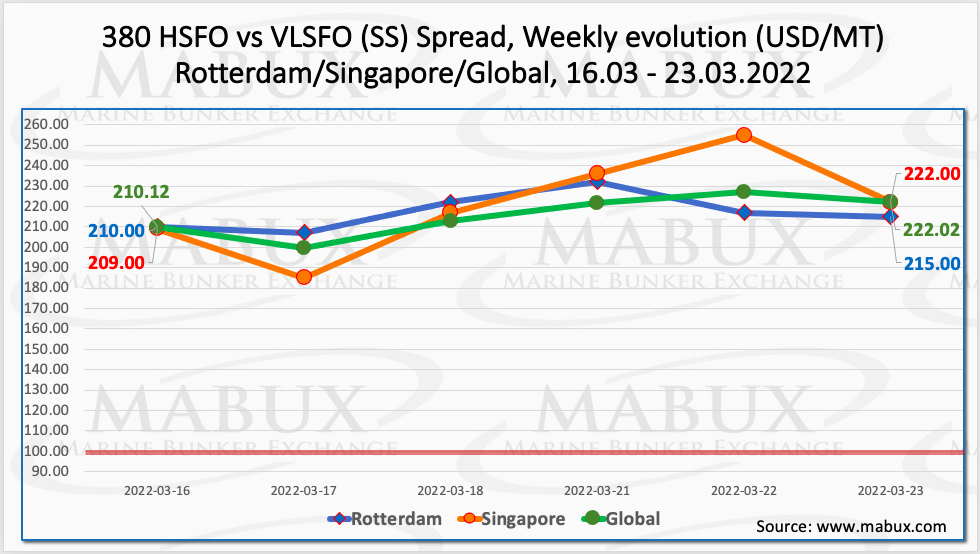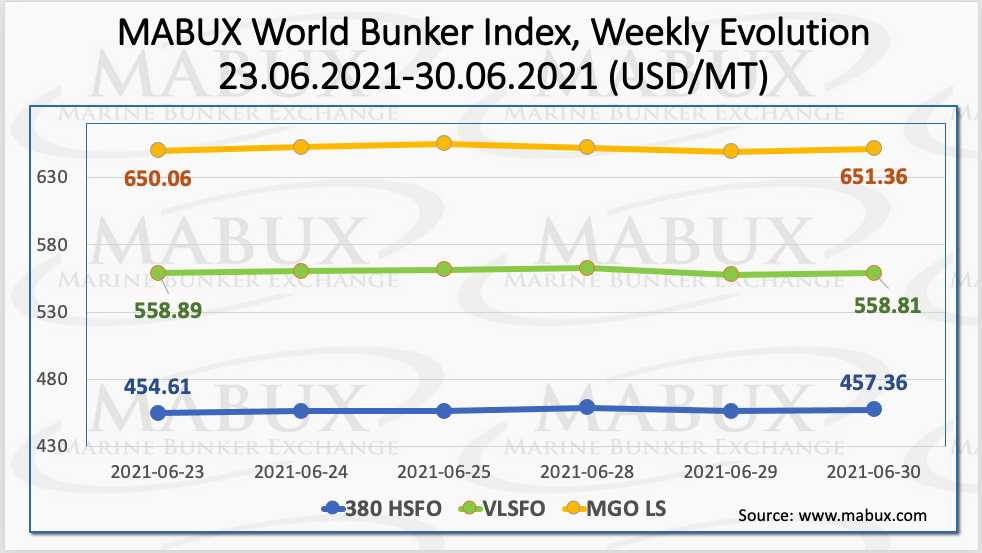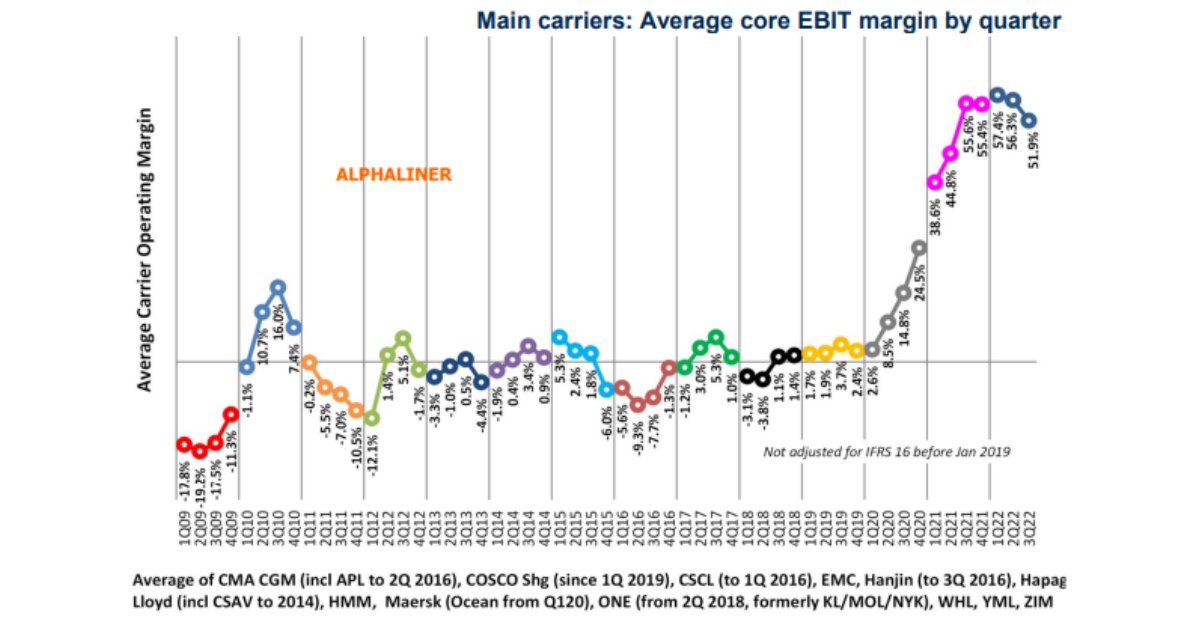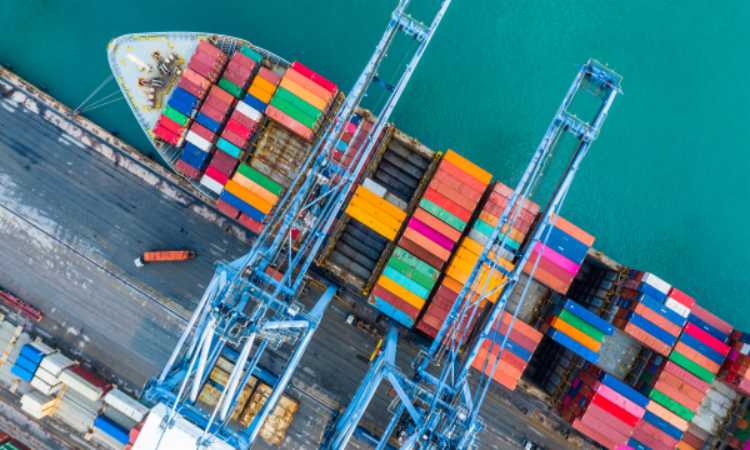

Sparked by the military conflict in Ukraine and the potential of up to 3 million bpd loss of Russian supply, the extreme volatility in bunker markets is here to stay. As a result of Week 12, the 380 HSFO Index rose by 35.97 USD: from 685.86 USD/MT to 721.83 USD/MT. The VLSFO index went up by 47.87 USD: from 895.98 USD/MT to 943.85 USD/MT. The MGO index gained 47.15 USD (from 1111.93 USD/MT to 1159.08 USD/MT). At the same time, growth rates have significantly decreased compared to those two weeks earlier.

The Global Scrubber Spread (SS) weekly average – the difference between 380 HSFO and VLSFO – fell slightly over the week compared to the sharp growth two weeks earlier: minus $22.42 ($215.59 vs. $238.00 last week). In Rotterdam, the average SS Spread dropped from $267.67 to $217.17 (minus $50.50 from last week). In Singapore, the average SS Spread also fell by $40.50 from $261.17 to $220.67. The average Global SS Spread and Ports SS Spread continue to stay above the $200 mark. More information is available in the Price Differences section of mabux.com.

Gas prices in Europe remain at record levels amid escalating geopolitical risks. LNG as a bunker fuel is still not listed. A per Avenir LNG, with gas prices surging in Europe, LNG as a marine fuel is currently more interesting in the Americas and Asia than in the Baltic Sea region. Many of the dual fuel vessels, originally designed to allay concerns over LNG availability, are now using small volumes of LNG to keep the tanks cold or to operate on LNG when they’re in port, but obviously the majority of the dual fuel fleet is running on diesel. ‘The LNG consumption is rather low currently and there’s only a few companies that are still highly invested in LNG or running on LNG, or even LBG (liquefied biogas), which is even more costly. Customers that are taking LNG volumes are doing so sparingly. A shipowner with a weekly bunkering schedule may now be going as much as two months before refuelling. LNG-fuelled vessels, especially tankers and feeder ships, are at a significant cost disadvantage to diesel-fuelled equivalents.
Over the Week 12, the average correlation of MABUX MBP Index (market bunker prices) vs MABUX DBP Index (MABUX digital bunker benchmark) showed that the global bunker market was still prevailed by an overpriced fuel trend amid high volatility. Thus, 380 HSFO fuel grade remained overpriced in all four selected ports: in Rotterdam – plus $54, in Singapore – plus $4, in Fujairah – plus $25 and in Houston – plus $100. The most significant was a 54-point drop in 380 HSFO overpricing level in Singapore.
VLSFO fuel grade, according to the MABUX MBP/DBP Index, also remained overpriced in all selected ports: plus $105 in Rotterdam, plus $43 in Singapore, plus $104 in Fujairah and plus $9 in Houston. Decline by 50 points in fuel overprice ratio at Singapore was the most significant.
As for MGO LS, the MABUX MBP/DBP Index registered an overpricing of this fuel grade in three out of four selected ports: Singapore was in the undervaluation zone with minus $ 44. In Rotterdam, Fujairah and Houston, MGO LS was overvalued by $ 12, $ 82 and $124 respectively. The most significant change was a sharp drop of the overprice margin in Houston by 65 points.
 The escalation of the military conflict in Ukraine continues to be a potential driver for bunker prices uptrend, while growth rates have significantly slowed down. We expect the global bunker market to remain highly volatile with a predominance of sharp irregular changes next week.
The escalation of the military conflict in Ukraine continues to be a potential driver for bunker prices uptrend, while growth rates have significantly slowed down. We expect the global bunker market to remain highly volatile with a predominance of sharp irregular changes next week.
Source: www.mabux.com













